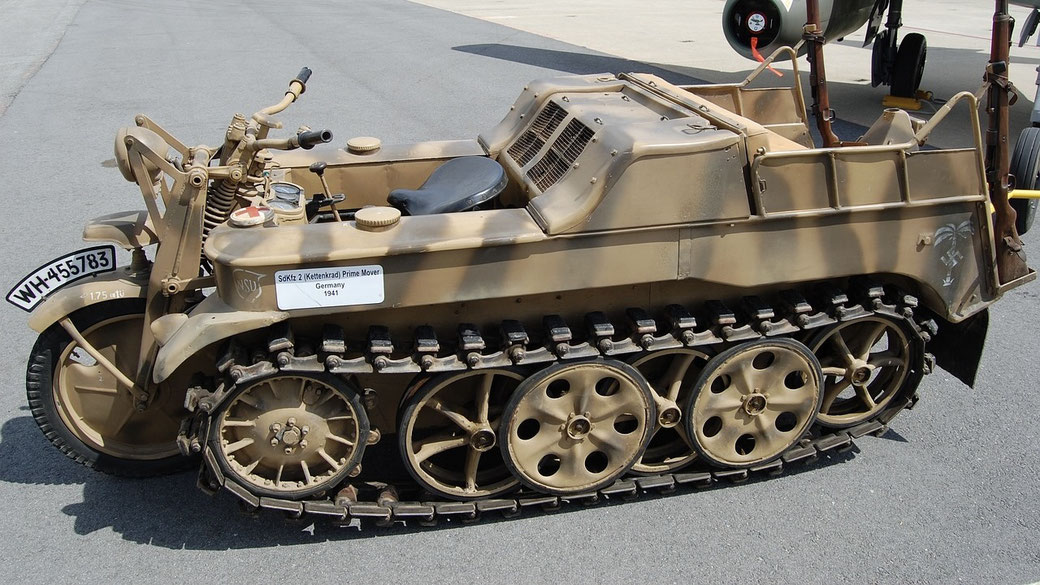What was the German army's strategy of 'blitzkrieg' in WWII and how did it work?

The word Blitzkrieg, which means "lightning war," conjures up images of fast-moving tanks, artillery, and soldiers sweeping across the landscape, leaving destruction in their wake.
It was a military tactic that revolutionized warfare and allowed the German army to swiftly and decisively conquer much of Europe during World War II.
But what was it and how did it actually work?
What was 'blitzkrieg'?
The Blitzkrieg tactic was designed to be a combination of fast-moving armored units, air power, and infantry support.
They would all work in coordination to create a rapid and overwhelming force that could swiftly overcome enemy defenses.
It was the brainchild of German military theorist and general, Heinz Guderian, who in the 1930s advocated for the development of a new type.
He wanted a kind of warfare that would utilize mechanized and mobile units to achieve quick and decisive victories.
How did blitzkrieg work?
The Blitzkrieg tactic was built on three main components: speed, surprise, and concentration of force.
To achieve this, German military leaders utilized a combination of different elements:
1. Air Power
The German air force, or Luftwaffe, played a crucial role in Blitzkrieg tactics. The Luftwaffe would launch massive bombing campaigns against the enemy's front-line positions, communications networks, and transportation infrastructure. This bombing created chaos and confusion among the enemy forces, making it easier for the German ground forces to advance quickly.
2. Fast-Moving Armored Units
The German army relied heavily on fast-moving Panzer tanks, which were used to spearhead the attack. These tanks were supported by a range of other armored vehicles, including artillery, self-propelled guns, and armored personnel carriers.
3. Infantry Support
Infantry troops provided support for the tanks and other armored vehicles, helping to secure ground gained by the advancing armored units. Infantry troops were also used to clear out enemy strongpoints and secure vital objectives.
4. Communication and Coordination
The success of Blitzkrieg relied heavily on communication and coordination between different units. The use of radios and other communication devices allowed the German forces to move quickly and effectively, while coordination between the different units ensured that the attack was concentrated and focused.
By using these elements in combination, the Germans were able to achieve a high degree of mobility and flexibility, which allowed them to outmaneuver and outflank their opponents.
How it was used in Poland and France
The first major demonstration of Blitzkrieg tactics came during the invasion of Poland in September 1939.
Here, the German forces quickly overwhelmed the Polish defenders, allowing the Germans to capture the country in just over a month.
Then, in the spring of 1940, German forces launched a massive invasion of Western Europe, using Blitzkrieg tactics to overwhelm the French, Belgian, and British forces that stood in their way.
The speed and effectiveness of the German advance caught the Allies off guard, and the Germans were able to capture France in just six weeks.
Its failure in Russia
The Blitzkrieg tactic continued to prove successful in other campaigns throughout the war, including the invasion of the Soviet Union in 1941.
However, the German army's reliance on the Blitzkrieg tactic ultimately contributed to their downfall.
As the war dragged on, the German army faced increasingly fierce resistance from their enemies, who had learned to counter the Blitzkrieg tactic with more effective anti-tank weapons and tactics.
What do you need help with?
Download ready-to-use digital learning resources
Copyright © History Skills 2014-2024.
Contact via email
With the exception of links to external sites, some historical sources and extracts from specific publications, all content on this website is copyrighted by History Skills. This content may not be copied, republished or redistributed without written permission from the website creator. Please use the Contact page to obtain relevant permission.





